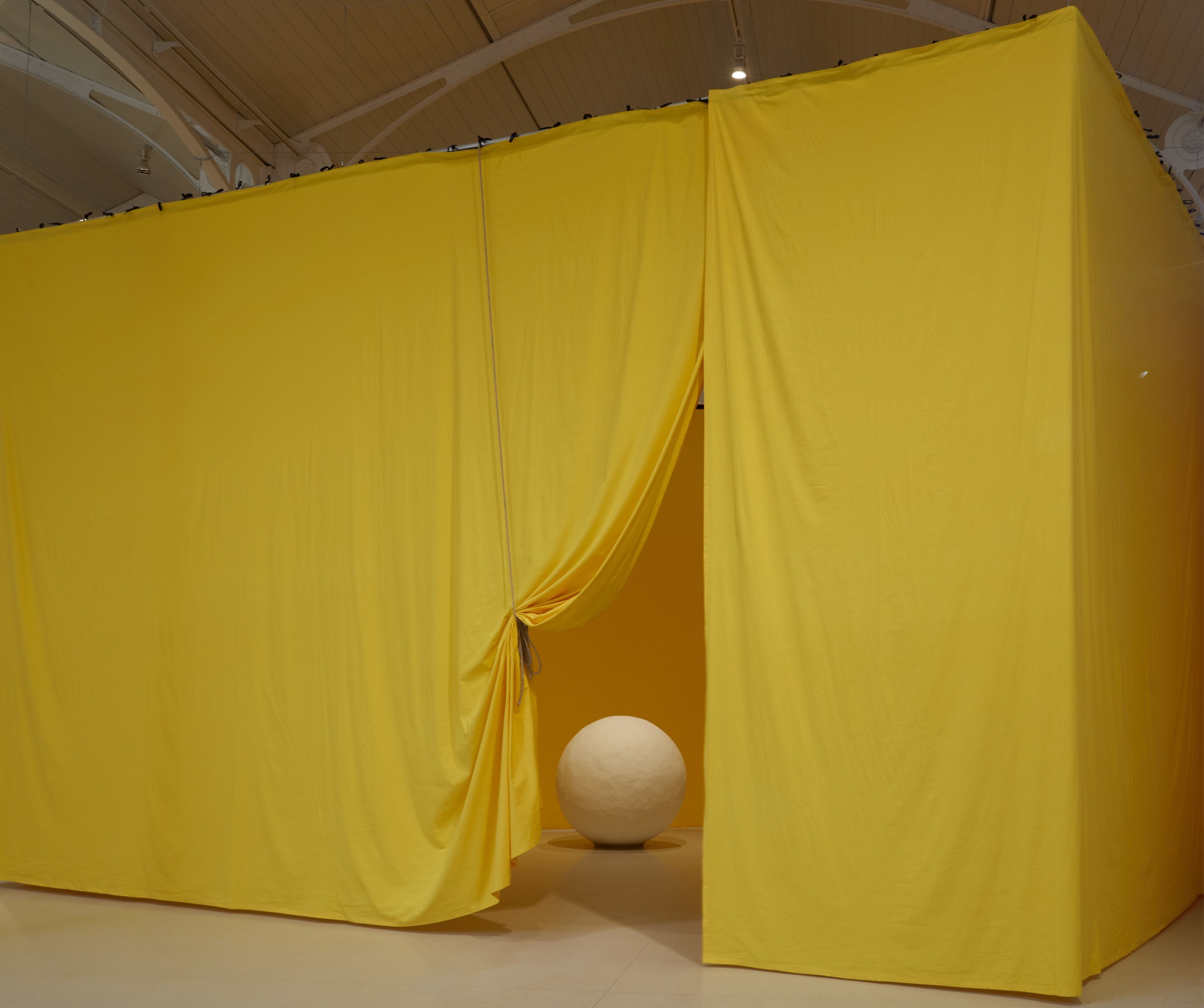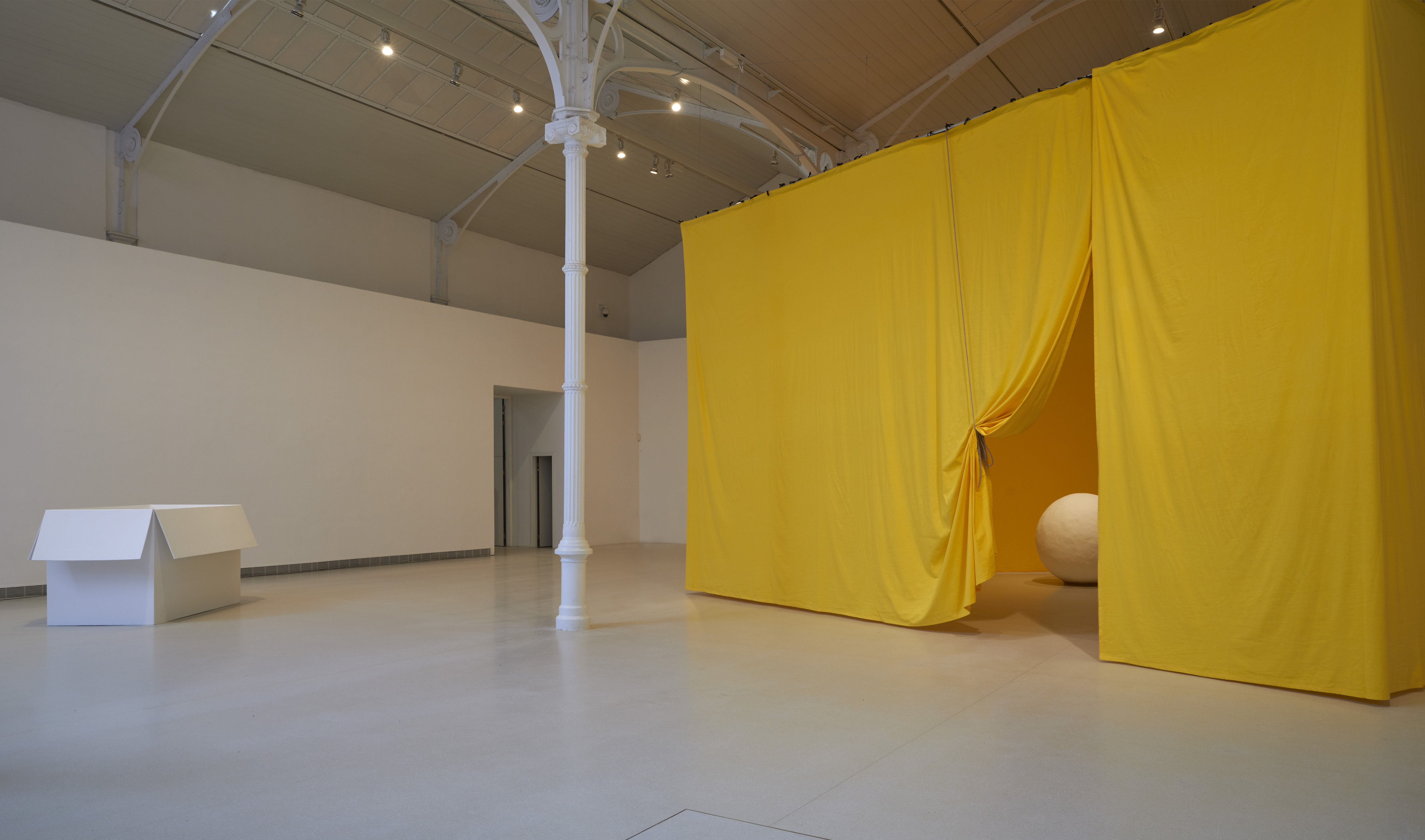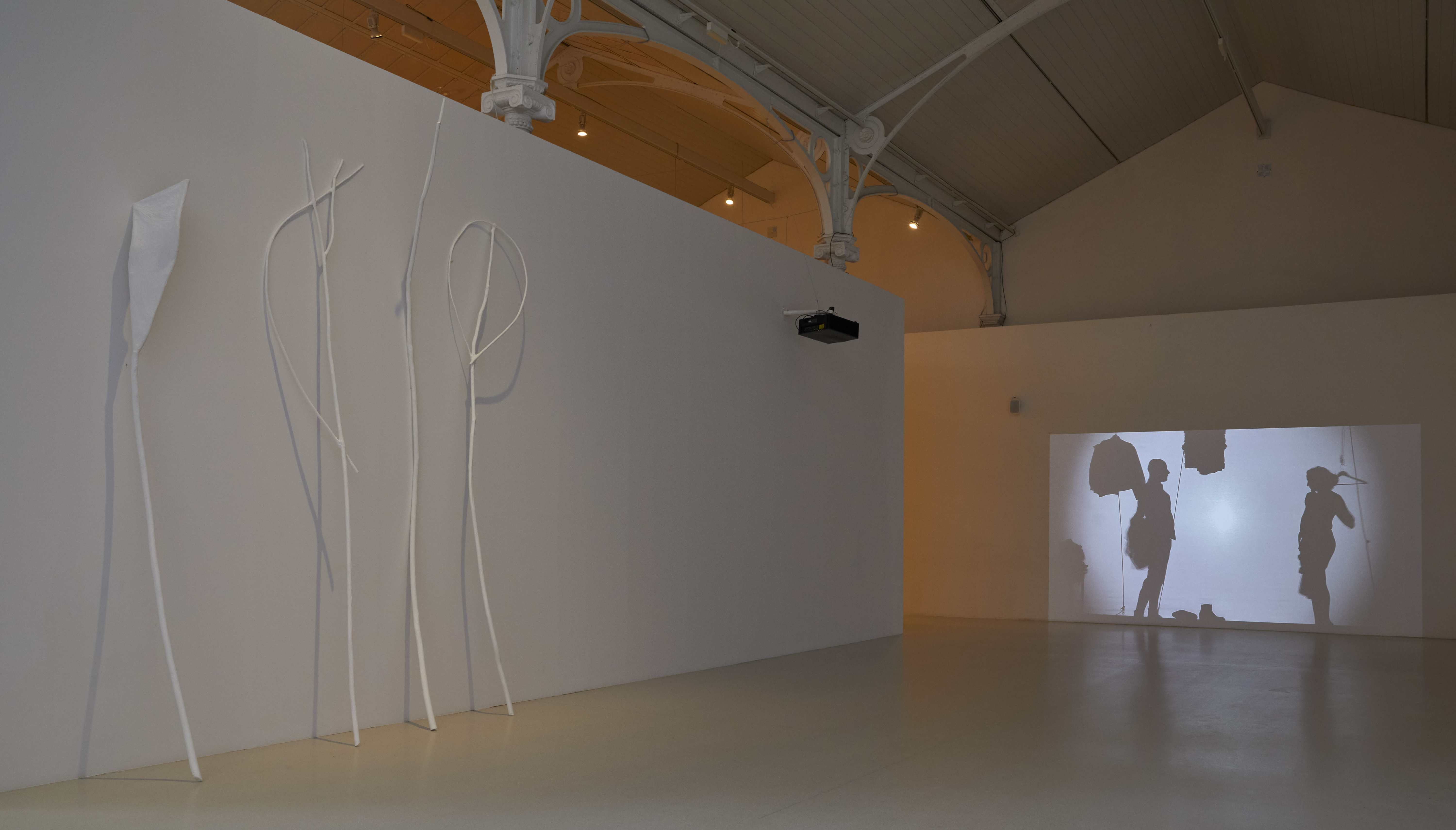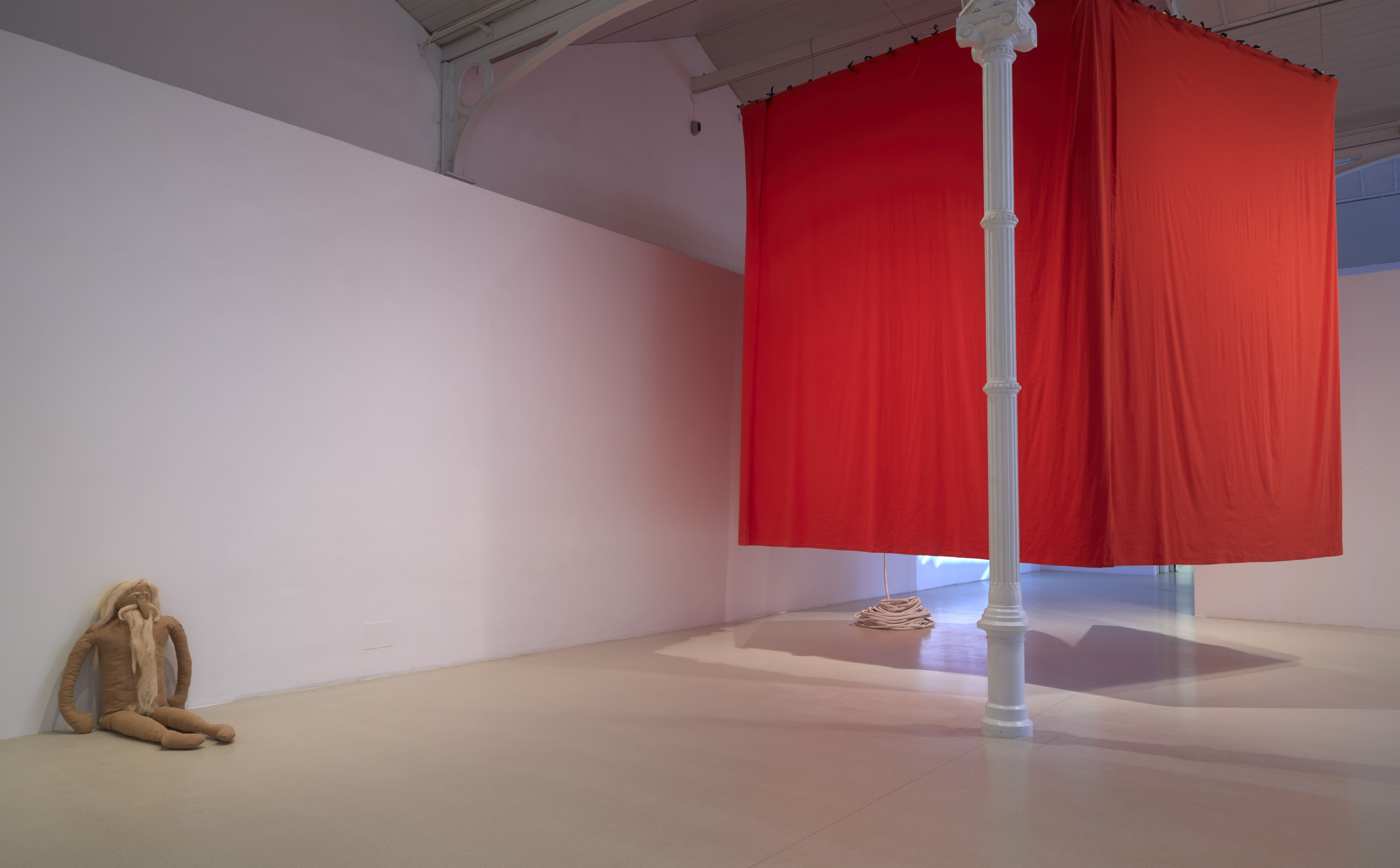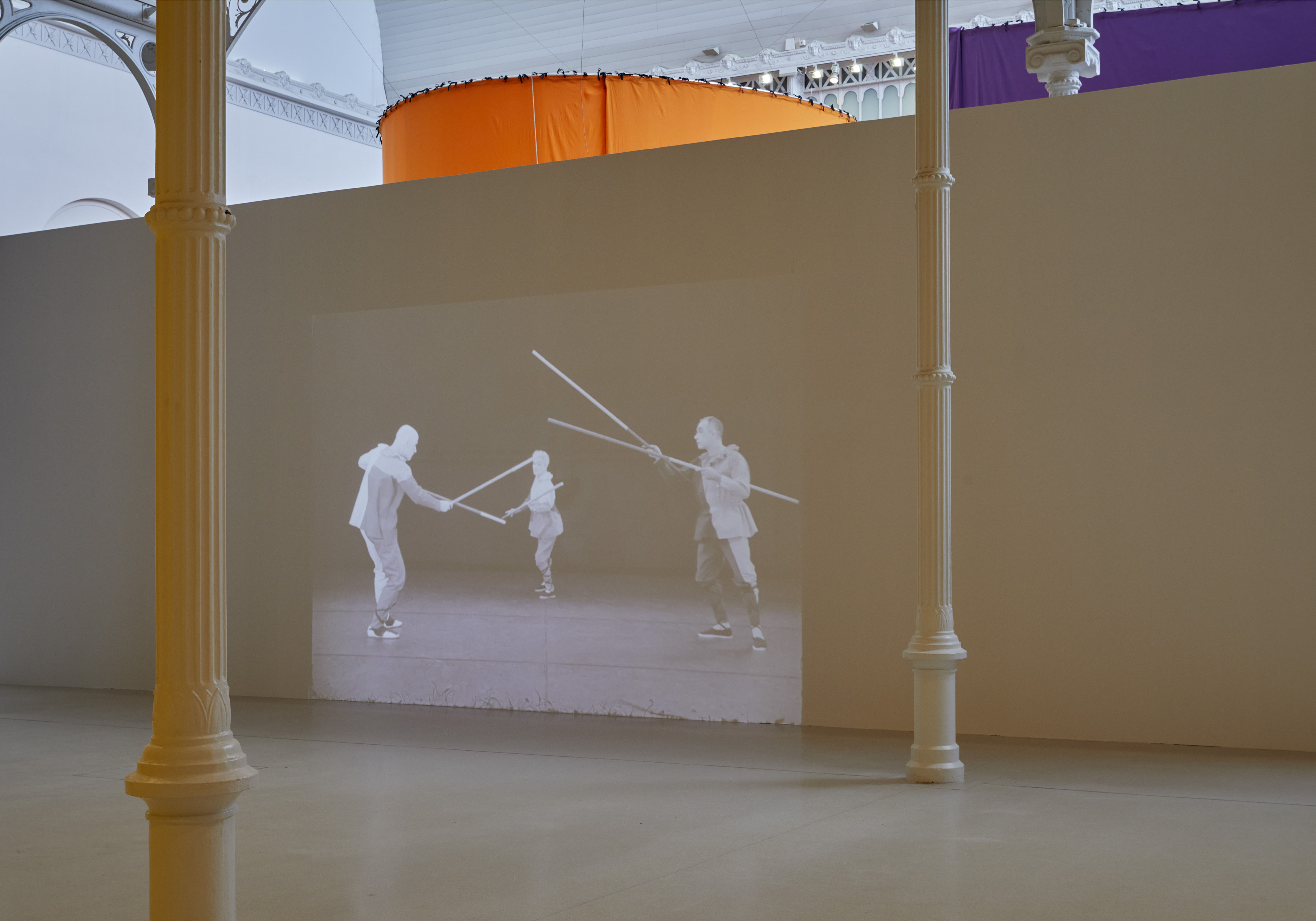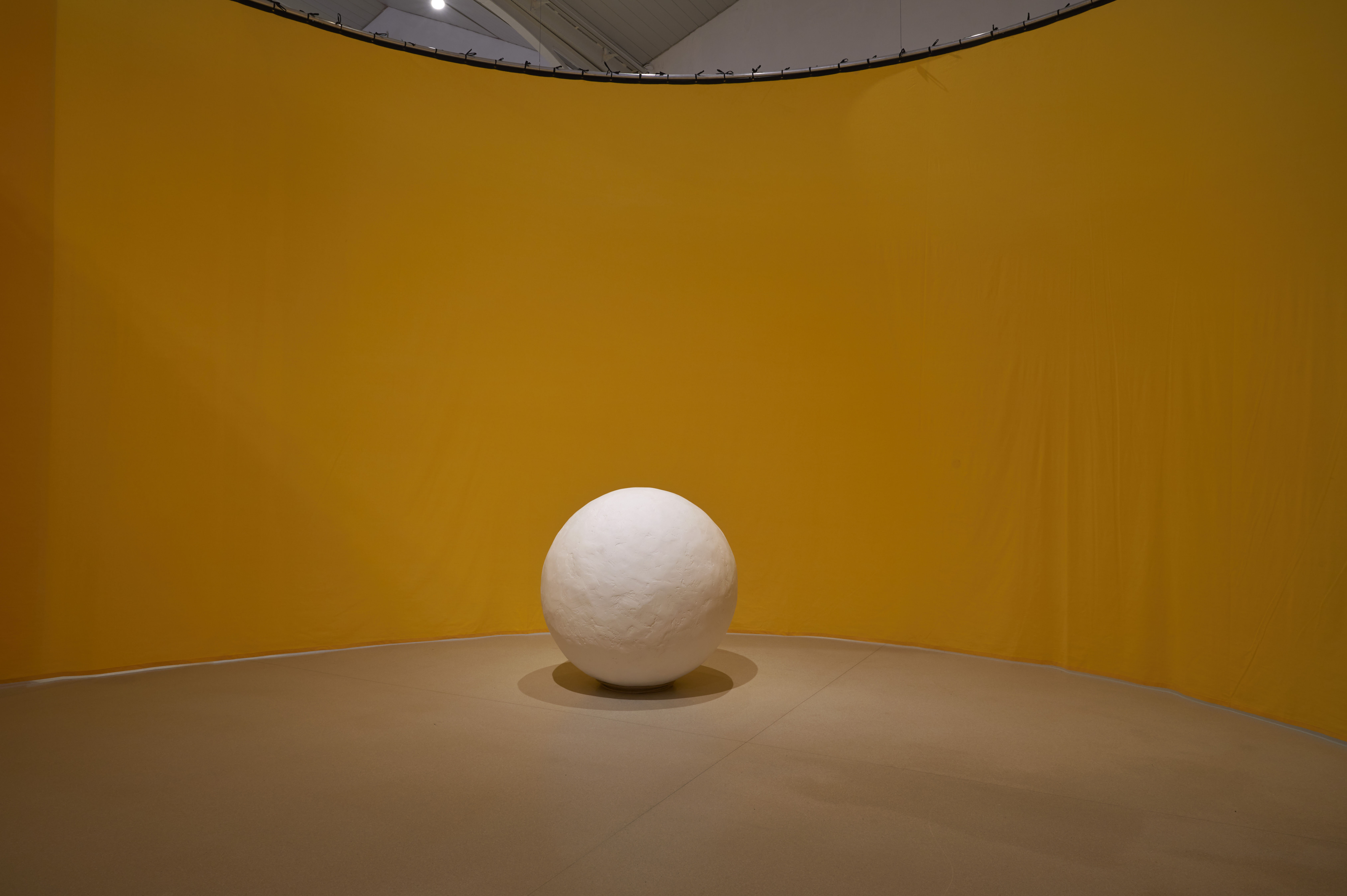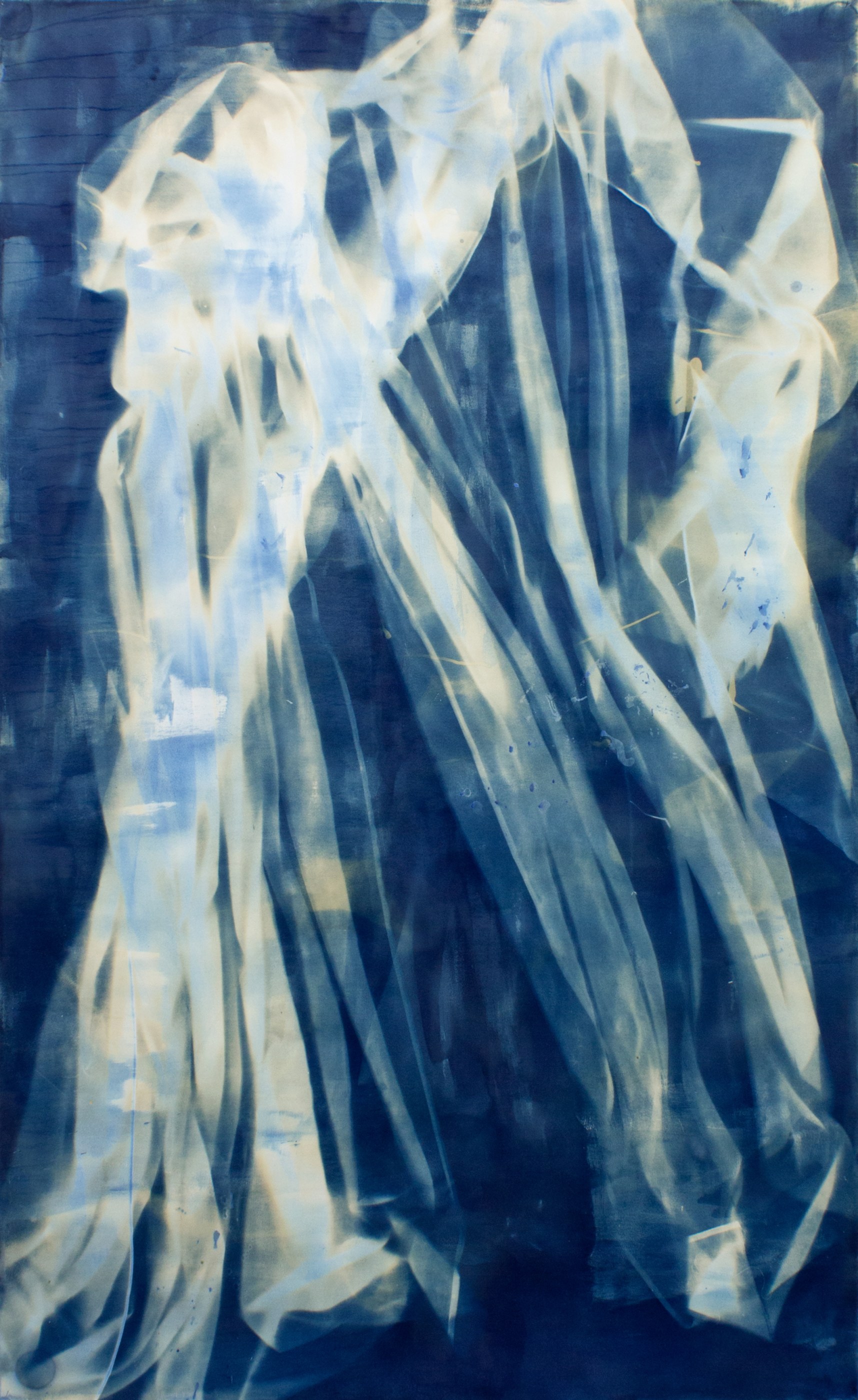Overview
The work of Ulla von Brandenburg is influenced by her early training as a stage designer and her passage through the world of the theatre. For this exhibition, conceived specifically for the Palacio de Velázquez in Retiro Park, the artist has created a series of textile installations that can be crossed in the manner of stage curtains through apertures that blur the limits between the inside and the outside. These textile geometric shapes are shown along with three films by the artist, broadening information, contributing nuances, and inciting the spectator to explore this new scenography of imbricated spaces and stories.
In this exhibition conceived specifically for the Palacio de Velázquez in Retiro Park, the artist encourages the public to become the protagonist of the theatrical scene. She transforms the notion of the formerly impenetrable fourth wall into an invitation to the viewer to resignify the work with their own experience, raising the possibility of an exchange of roles between spectator and actor. She thus establishes an itinerary with no specific direction, although one is suggested by a series of textile installations with geometric shapes that, much like stage curtains, can be traversed through openings, and that allow us, at the same time, to glimpse a spatial continuity in which the limits between the inside and the outside are blurred.
The simple geometric shapes that form the curtains refer us to the gestalt gestation that inspired the Bauhaus, a school that also underlies von Brandenburg’s concept and artistic practice. The bright colours that define each of the figures correspond to the psychological color theory of Johann Wolfgang von Goethe (1749–1832), with which he argued for the emotional and phenomenological component of colour. He thus refuted Newton, who understood colours as the mere results of physical laws. The artist filters Goethe’s postulates through the German school of the interwar period, specifically referencing the first concepts of dance proposed by the Bauhaus artist Oskar Schlemmer (1888–1943), who advanced ideas for a ballet based on three geometric shapes: circle, square, and triangle. In this work, changes of colour were to parallel shifts of mood, which led afterwards to the creation of the experimental Das Triadische Ballett (The Triadic Ballet), first performed in 1922.
The textile geometric shapes are displayed together with three of von Brandenburg's films: Maskiert und vor allem – verschwiegen (Masked and Above All—Silent, 2022), Shadowplay (2012), and The Objects (2009), which explore the language of theatre, paying special attention to the performative and psychological components of the characters. Most of them are shot in 16mm, and filmed in a single sequence, with scarcely any editing.
The installation is complemented by various objects distributed around the space that are similar to those used by the characters in the films. The props thus appear to have escaped from the world of film, causing a confusion of spatiotemporal dimensions that is increased by the distancing produced through the absence of colour. In their turn, the characters in the film will come to life on the opening day of the exhibition, performing with the objects and so making their games spill outside the projection.
With her different works, the artist offers us a complex narrative with many layers of reading for a spectator who is always situated at the center of the action. In an illusory and paradoxical game, von Brandenburg’s continuous references to theatrical language become allusions to life itself, our existence in society, and the role we play in it.
